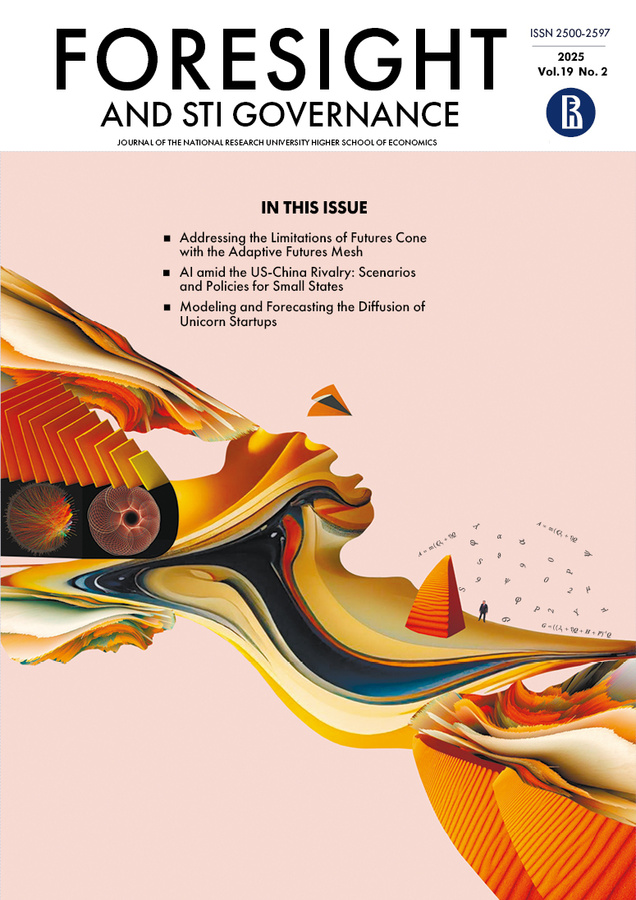Vol 9, No 2 (2015)
- Year: 2015
- Articles: 6
- URL: https://bakhtiniada.ru/1995-459X/issue/view/23799
INNOVATION AND ECONOMY
Technological Landscape and Collaborations in Hybrid Vehicles Industry
Abstract
 6-21
6-21


The Role of Companies in Human Capital Accumulation: Cross-Country Analysis
Abstract
 22-37
22-37


SCIENCE
From Research Project to Research Portfolio: Meeting Scale and Complexity
Abstract
 38-43
38-43


MASTER CLASS
Entrepreneurship Theory: New Challenges and Future Prospects
Abstract
 44-57
44-57


Long-term Stochastic Forecasting of the Nuclear Energy Global Market
Abstract
 58-71
58-71


EVENT
XVI HSE April International Academic Conference on Economic and Social Development. Section 'Science and Innovation' (April 8–10, 2015)
Abstract
Cross-country competition and cooperation in research and innovation are the key concerns of currentscience and technology (ST) policy. To provide a broad public discussion of these issues, the HSE ISSEKorganized several round tables and seminars as part of the XVI HSE April Conference. Participantsconsidered new approaches to prepare Russia’s long-term ST forecast, the outputs of Foresight studies inhealthcare, fuel and energy, aerospace and water industries, and discussed the practicalities ofestablishing an HSE-based international Foresight network. The preliminary results of the HSE project thatstudies the impact of technology on society were presented. A special seminar held under the auspices of anOECD working group focused on cooperation between universities, businesses and public authorities inresearch, education, and innovation. Another discussion focused on Horizon 2020, the EU Framework Programmefor research and innovation development which started in 2014 and is open to research institutions fromthird countries. Finally, new approaches to building regional innovation systems were scrutinized,including ‘smart specialization’, the impact of local conditions on the effectiveness of research andinnovation activities, and effective practices of interaction between authorities of different levels.Presentations were made by representatives of George Washington University (US), OECD, UN EconomicCommission for Europe, National Institute for Science and Technology Policy (NISTEP, Japan), Centre forSocial Innovation (Austria), The Ministry of Education and Science of the Russian Federation, RussianScience Foundation, Russian Academy of Sciences, Moscow Government, Bank for Development and ForeignEconomic Affairs (Russia), Russian Venture Company, Higher School of Economics (Russia), and otherorganizations.
 72-81
72-81











